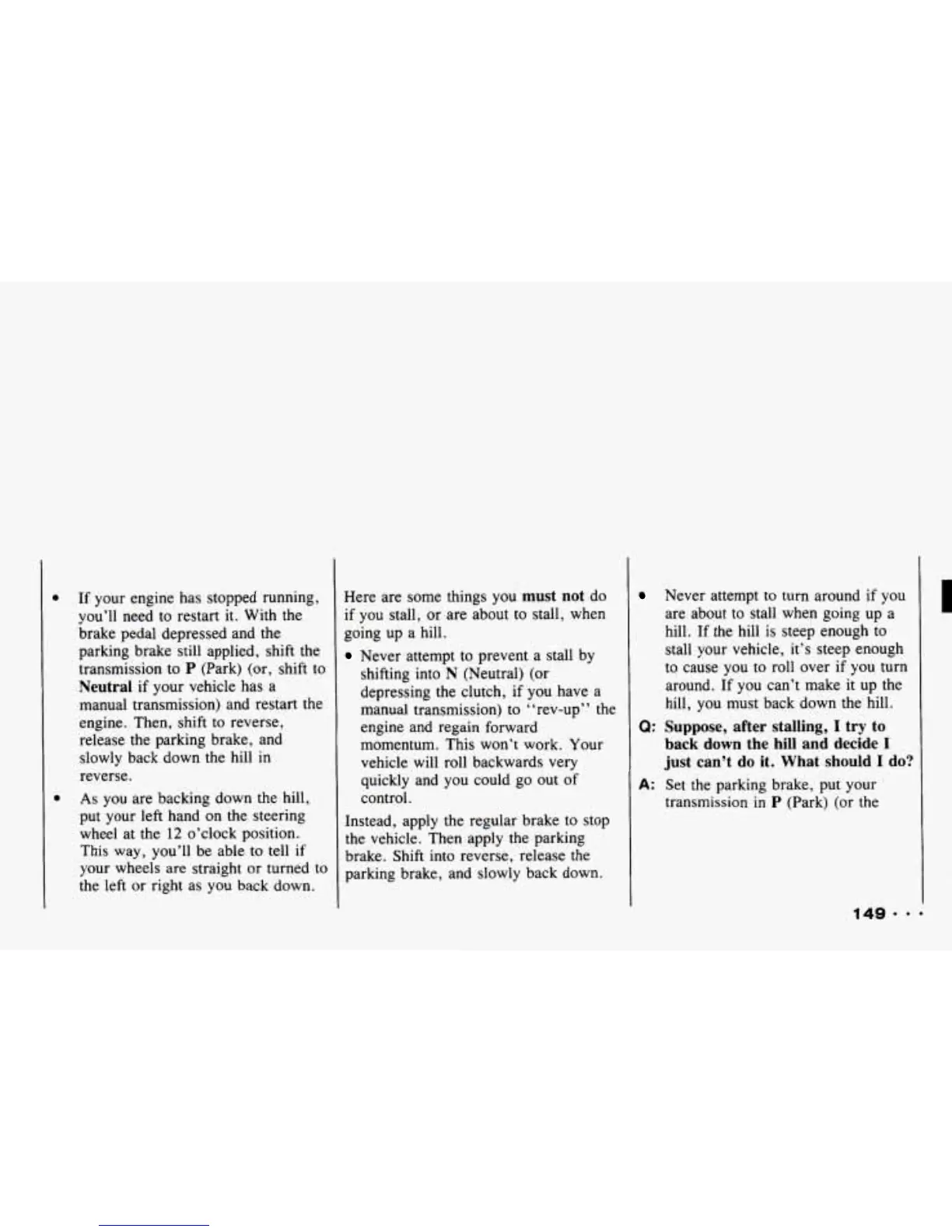If your engine has stopped running,
you’ll need to restart
it.
With the
brake pedal depressed and the
parking brake still applied, shift the
transmission
to
P
(Park) (or, shift to
Neutral
if your vehicle has a
manual transmission) and restart the
engine. Then, shift to reverse,
release the parking brake, and
slowly back down the hill in
reverse.
As
you are backing down the hill,
put your
left
hand on the steering
wheel at the
12
o’clock position.
This way, you’ll be able
to
tell
if
your wheels are straight or turned to
the left or right as you back down.
Here are some things you
must not
do
if
you stall, or are about
to
stall, when
going up
a
hill.
Never attempt to prevent a stall by
shifting into
N
(Neutral) (or
depressing the clutch, if you have a
manual transmission)
to
“rev-up” the
engine and regain forward
momentum. This won’t work. Your
vehicle will roll backwards very
quickly and you could go out of
control.
Instead, apply the regular brake to stop
the vehicle. Then apply the parking
brake. Shift into reverse, release the
parking brake, and slowly back down.
Never attempt
to
turn around if you
are about to stall when going up a
hill.
If
the hill is steep enough to
stall your vehicle, it’s steep enough
to cause you to roll over if you turn
around. If you can’t make it up the
hill, you must back down the hill.
Q:
Suppose, after stalling,
I
try to
back down the hill and decide
I
just can’t
do
it. What should
I
do?
A:
Set
the parking brake, put your
transmission
in
P
(Park) (or the
